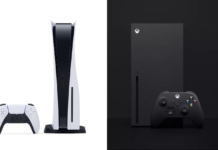Customer service and Microsoft’s track record with second chances
If it isn’t evident enough to you yet, let me make it so: Microsoft is a prideful company. They don’t like admitting they’re wrong, and when they’re showcasing something, they do it with a bit of “swagger” that only a company formerly owned by Bill Gates can do. However, something changed, at least momentarily, when Microsoft shocked the world and switched two of their Xbox One policies after listening to fan outcry via social media and pre-orders. This continued just today when, as I previously mentioned, Microsoft revealed that indie game publishers can self-publish on Xbox One. This tells me that Microsoft is finally learning a vital trait to customer service that extends from the casual consumer to the hardcore community that’s been around since 2002.
And on a similar note, Microsoft has a track record with second chances and not stumbling twice. Xbox to Xbox 360. Pre-360 Xbox LIVE to Xbox LIVE with a marketplace and user interaction. These are just two examples of getting things right after failure, and I’d argue that this time around Microsoft has more to “get right” than ever before. As I previously touched upon, Kinect is one monumental pillar to restructure – to build back faith in fans. Another is that of games themselves. And finally is one they’ve already begun to tackle, and that is that of used game restrictions and always online.
Customer service is a priority for any successful company, and it’s promising that Microsoft’s is beginning to span towards the hardcore, gaming crowd that so dearly just wants to be recognized and cared for.

Seamlessness
Take a look at your Xbox 360 quick. It’s a pretty impressive piece of hardware, isn’t it? One that can play triple-A, disc-based games, music & other applications and ultimately interact with people all over the world. However, none of this is seamless. The Xbox One aims to bring forth these present features, along with a slew of new ideas that I highlighted earlier, and blend them together so that an “all-in-one entertainment system” can literally be that, and not just a box that provides everything in a choppy, set-apart manner.
This should excite you because it, once again, provides countless opportunities for games. Microsoft wants you to be able to search for a guide of the game you're playing as you play that specific game. Microsoft wants you to Skype your buddies while you take down strangers in Call of Duty's multiplayer. Microsoft wants you to do all of this because it plays into the hands of the Xbox One. And if it’s done truly seamlessly, it’s going to create a unique atmosphere that chat did for Xbox LIVE way back when.
Think about it. Seamlessness is exciting.
What did we miss?
What else makes you excited about Xbox One? Let us know by commenting below, and be sure to check out GameZone daily for all your industry needs.
Xbox One has caught a lot of flak since its reveal this past May. Warranted or unmerited, Microsoft has been unable to catch a break, and this moment in time seems to be a low valley amidst the mountaintop Microsoft has been standing atop throughout most of the Xbox 360’s lifespan. Simply put, the excitement surrounding Xbox One seems to be lacking… majorly. Is Microsoft’s next-gen console doomed? Should you be excited for a console that’s been surrounded by mostly negative press? Well I’m glad you asked, because the answer is yes. Xbox One is a viable addition to our industry, which is why I’ve set out to highlight a few reasons you should be excited for Xbox One before it hits store shelves this November.

Innovative ideas
Yes, perhaps this is where Microsoft has seemed to falter with Xbox One thus far, yet it’s also where they have the best opportunity to impress the masses.
Microsoft is ambitious with Xbox One. The future of this ever-changing industry is at the very heart of Xbox One. Whether it be cancelled always-online plans or current features such as instant switching, Microsoft’s aspiration to deliver something truly “next-gen” is undeniably present.
This is something to be incredibly excited for because no longer is a console release about improved graphics and how many pixels or polygons it can fit on one screen. It’s about what a machine can deliver that sets it apart from its predecessor. When I look at both PlayStation 4 and Xbox One, I see a gaping difference in this idea. Microsoft has plans set in motion for instant switching, prompt voice commands, in-game social features and much more that’s going to push us into the future.
Conceivably, you may not find these features that “futuristic,” but I tell you that they are only the beginning. These precursors will likely set in motion a slew of features that will transform how we play games and view media, and there’s no denying that Microsoft, Xbox One is at the forefront of this mindset.

The Promise of Kinect 2.0
Failure and Kinect were probably two words Microsoft didn’t see fit together prior to 2010 when they were dreaming up what Kinect would do for gaming; but flash-forward to 2013, and it pains me to say that Microsoft’s peripheral – their impressive, naïve tech – has succumbed below the depths of letdown.
So why should Kinect 2.0 be any reason to be excited for Xbox One? One word: promise.
No, I’m not talking about the promise that was shoved in our faces in 2010 with that discomforting Cirque du Soleil E3 presentation. I’m talking about promise supported by legitimate improvements, and that’s exactly what Kinect 2.0 has done so far. Go ahead, type "Kinect 2.0 impressions" into Google's search bar and see what our colleagues in the industry are saying. Something is drastically different about this Kinect. Many are calling it the Kinect that Microsoft always intended it be.
Whatever it is, it’s promising. Microsoft has significantly adjusted Kinect’s field of view so that users with limited play space can finally join in on the fun. Kinect 2.0 has also undergone a user monitoring system overhaul, which now registers movement virtually instantly with little to no lag. And above all else, Kinct 2.0 is actually being directly integrated into Xbox One to add a dynamic across all levels of entertainment.
Of course none of these improvements mean better Kinect games, but it certainly allows developers to develop titles for a peripheral that’s ready for what it aims to do. And above all else, we can hope that its overhauled features will jumpstart the minds of developers to make experiences for Kinect that evolve the games we play.

First-party and indie support
I’ll hand it to Sony. They straight-up roasted Microsoft with arguably the greatest press conference in E3 history. However, under the hood, it actually underwhelmed because, really, nothing new on the games front was shown apart from a title or two. On the contrary, Microsoft’s presser resulted in embarrassment with restrictions, price and horrid communication; but it also overwhelmed in terms of games. You see, Microsoft temporarily showed us that their plans to be an all-in-one entertainment console will not hinder their focus on games. Take a look it at it yourself: Titanfall, Ryse, Dead Rising 3, Forza 5… the list goes on and on (especially with over a dozen first-party games scheduled in the first year of the console itself).
Then there’s the indie side of things. Microsoft has been notoriously known for being difficult to work with, and, until today, it looked like Xbox One was going to be the same; that is until Microsoft announced that indie game publishers will be able to self-publish on their console. Better yet, every Xbox One will give users the ability to create and publish games in due time. Does this mean that Microsoft will magically be the peachiest company to work for? Of course not. However, it shows that they’re attempting to change their way of doing things for the betterment of the games and those who make them.
Microsoft cares about games. It’s what Xbox One is at its core, and it's nice to see that a company so prominently known for their two first-party powerhouses, Halo and Gears of War, is venturing out to optimistically provide more excellent series for gamers to invest in for years to come on Xbox One.











